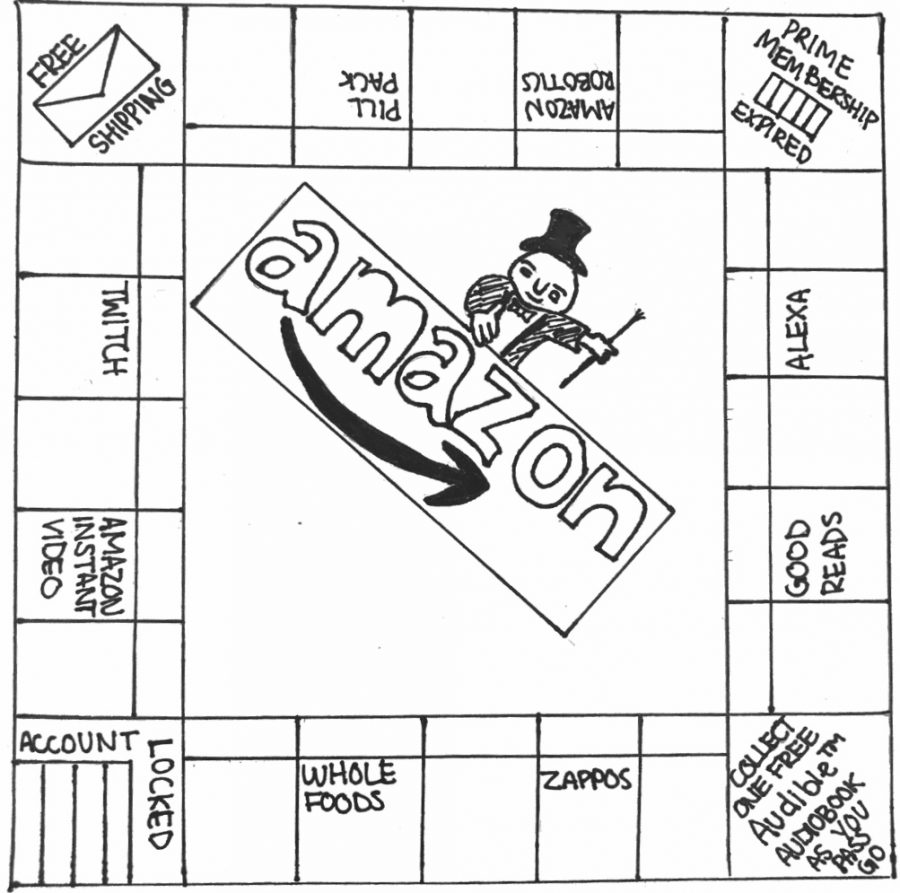The United States population is currently around 328,075,070. Out of that 328 or so million, 95 million subscribe to Amazon Prime––including me, as my family has been subscribed to Prime since 2015. When the first day of school comes around, I buy my Pentel .5 pencils on Amazon rather than going to Staples on the side of the freeway, just like how I buy my makeup wipes in bulk and receive them in two days rather than driving to CVS in two minutes. While I type this, a six-pack of white tube socks is being sent to my doorstep from Amazon––they’re supposed to get here tomorrow.
A large amount of households around the country participate in the same online shopping my family and I do. In fact, 64 percent of all American households subscribe to Amazon Prime, according to Forbes, which is quickly diminishing the sales of major retail corporations such as Macy’s and Walmart. According to CNBC, Macy’s has closed upwards of 120 stores since 2015 due to Amazon’s expansion, and the Wall Street Journal reported that Walmart closed 154 stores in the U.S. and Puerto Rico in 2016. Retail overall has been struggling to keep up with Amazon, which is hurting its competition more and more each day.
If Amazon continues to grow at the rate they are currently, it could quickly leave both small businesses and large corporations in the dust––how far can the company spread before it crowds out everyone else?
While there are plenty of downsides to Amazon’s expansion, there is also merit to the different services that they provide. For example, college students only have to pay $44 a year for free two-day shipping of goods, which can prove to be handy with school supplies, or even food. Just under $9 a month for a regular Prime membership, in the grand scheme of things, is not too sizable a price either for what one receives. Considering the variety of goods they provide at typically lower costs than retail stores, signing up seems to be a cheaper and more convenient option for families and individuals.
However, the fact that Amazon isn’t constrained to e-commerce can be often overlooked. Not only has the company created the Alexa and digital platforms like Amazon Instant Video, they’ve obtained Kiva Systems (now called Amazon Robotics which creates robots for manufacturing). They’ve acquired an assortment of other companies as well, such as Wholefoods, Audible, Zappos and Twitch.tv. Most of these acquisitions may not seem very alarming and in fact rather harmless. However, there are other sectors that Amazon has begun venturing into that should raise more concern, specifically healthcare.
As a result of the inefficient and incredibly expensive U.S. healthcare system currently in place, Amazon has teamed up with J.P. Morgan Chase, a multinational investment bank, and Berkshire Hathaway, a long-term investment firm, to advance a relatively new form of digital healthcare. This is the exact reason why Amazon bought PillPack, who, according to their website, “is a full-service pharmacy that sorts your medication by the dose and delivers to your door.”
That sounds familiar, doesn’t it? Its philosophy is exactly that of Amazon Prime’s, except instead of delivering pencils and tube socks to your doorstep, they’re delivering prescription medication. This is only one aspect of the proposed system, ABC (the nickname of the joint venture), as it will supposedly encompass the entirety of healthcare.
Amazon getting involved in healthcare, even with the aim of improving the system in place, poses the question of whether Amazon’s expansion is becoming so large that they may even exceed the term “monopoly,” and may take on the term “empire.” According to The Economist, there’s a distinct reason why Jeff Bezos chose the name Amazon in the first place: “he called the firm Amazon because a giant river reflected the scale of his ambitions.”








